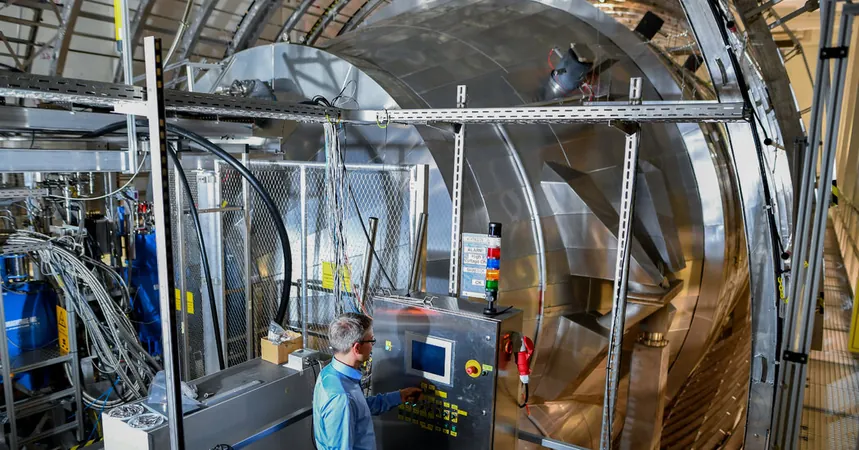
Neutrinos Are Getting Lighter, and That's a Game-Changer for Physics!
2025-04-10
Author: Jia
Breakthrough Measurement: Neutrinos' Maximum Mass Shrinks!
Researchers have just unveiled an astounding new measurement that dramatically reduces the maximum mass of neutrinos—those elusive particles that float through the universe almost undetected. This groundbreaking finding, published in the journal *Science*, gives physicists crucial clues about the mysterious gaps in the Standard Model of particle physics, their go-to theory for explaining the subatomic world.
Currently, the Standard Model suggests neutrinos should be massless, but this latest investigation provides an upper limit instead. Understanding neutrinos better could help cosmologists unravel the enigma of the universe's formation, shedding light on how galaxies clumped together after the Big Bang and what drives cosmic expansion.
Unlocking Cosmic Secrets: Neutrinos as Cosmic Messengers
John Wilkerson, a physicist from the University of North Carolina, Chapel Hill, states, "We’re looking at trying to understand why we are here, and neutrinos may hold the key to that question." Neutrinos are produced in massive quantities during nuclear reactions, yet these ghostly particles are incredibly hard to catch since they carry no electric charge.
They exist in three 'flavors' and can even transform from one to another—an astonishing phenomenon that earned the Nobel Prize in Physics in 2015. Scientists discovered that these flavor shifts imply that neutrinos must possess some mass, albeit extremely minuscule.
A Step Closer: The Quest for Neutrino Mass Continues!
The new measurement, derived from the KATRIN experiment, indicates that the mass of neutrinos should be no more than 0.45 electronvolts—about one million times lighter than an electron! This measurement pushes the limits lower than the previous threshold of 0.8 electronvolts and is considered far more precise.
Lexey Lokhov, a scientist involved in the study, described their finding as "the world’s best limit" on neutrino mass. With careful monitoring of tritium decay, where tritium transforms into helium while releasing electrons and antineutrinos, researchers calculated the mass indirectly, using the energy data from 36 million electron emissions.
What’s Next? The Future of Neutrino Research!
Excitingly, the KATRIN team plans to refine their neutrino mass measurements further by analyzing over 1,000 days' worth of data, aiming for even higher accuracy by year-end. Other initiatives, including Project 8 in Seattle and the Deep Underground Neutrino Experiment, are also poised to contribute vital information.
Astronomers, who observe the cosmos as influenced by these abundant neutrinos, have their own estimates for neutrinos' mass, but these numbers don't align with particle physics lab results. Wilkerson notes, "There’s something really interesting going on, and the likely solution to that is going to be physics beyond the Standard Model."





 Brasil (PT)
Brasil (PT)
 Canada (EN)
Canada (EN)
 Chile (ES)
Chile (ES)
 Česko (CS)
Česko (CS)
 대한민국 (KO)
대한민국 (KO)
 España (ES)
España (ES)
 France (FR)
France (FR)
 Hong Kong (EN)
Hong Kong (EN)
 Italia (IT)
Italia (IT)
 日本 (JA)
日本 (JA)
 Magyarország (HU)
Magyarország (HU)
 Norge (NO)
Norge (NO)
 Polska (PL)
Polska (PL)
 Schweiz (DE)
Schweiz (DE)
 Singapore (EN)
Singapore (EN)
 Sverige (SV)
Sverige (SV)
 Suomi (FI)
Suomi (FI)
 Türkiye (TR)
Türkiye (TR)
 الإمارات العربية المتحدة (AR)
الإمارات العربية المتحدة (AR)